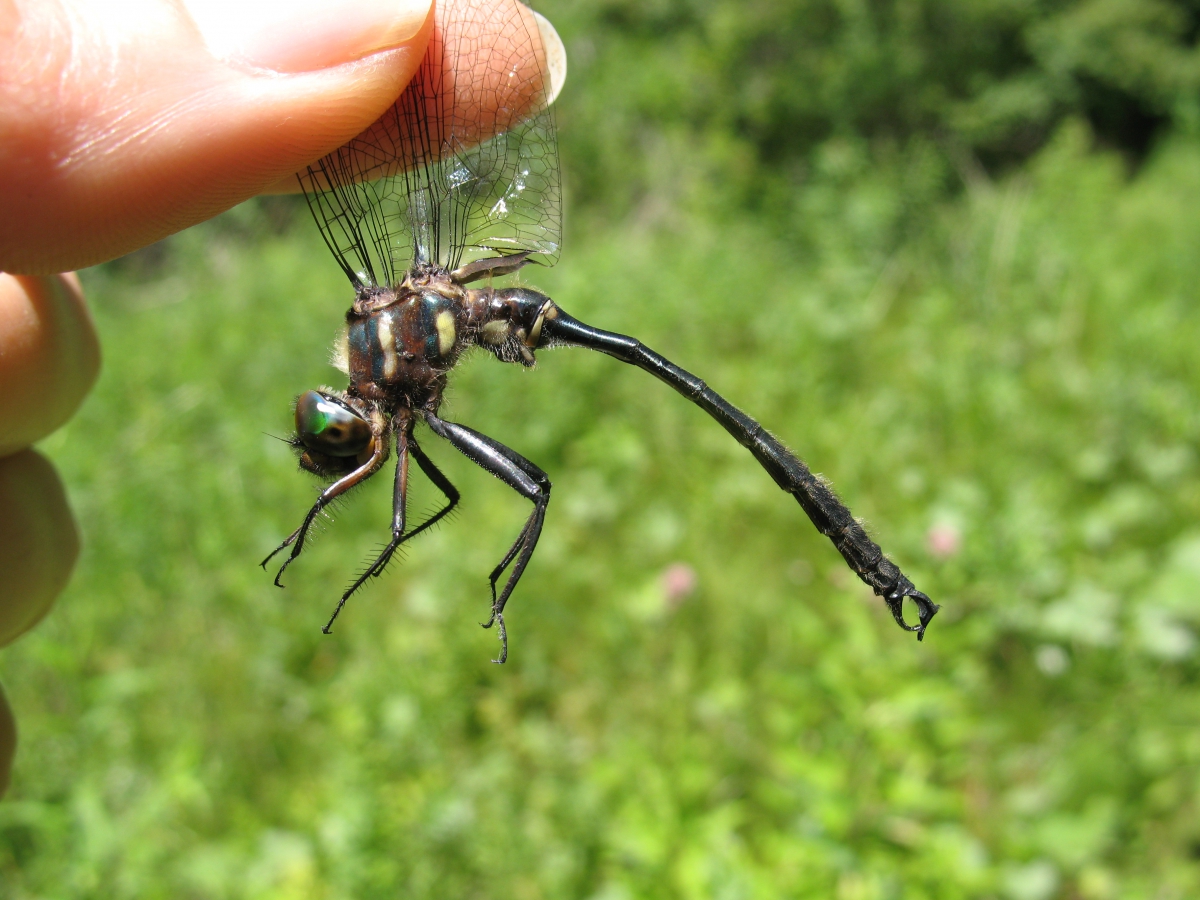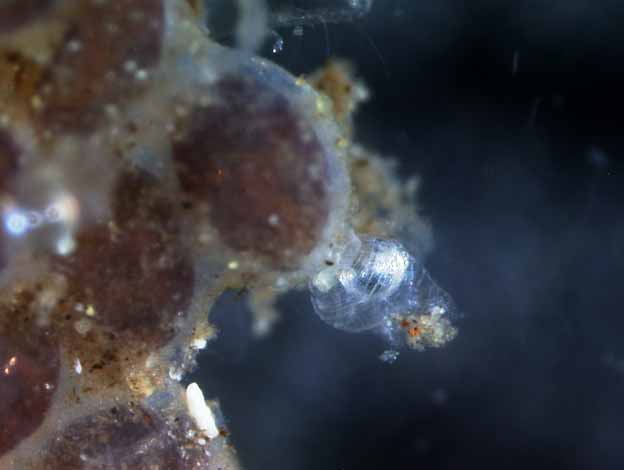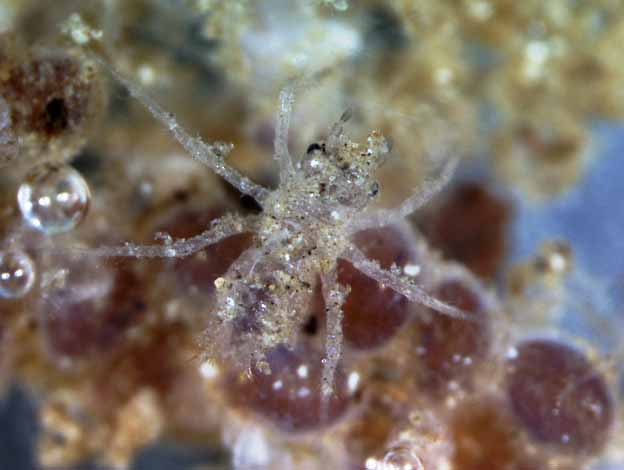A rare ‘dragon’ found….
Sometimes, there are really extraordinary stories that are uncovered in our day to day studies; this particular one was submitted by Dr. Henry Frania, an Entomology research associate at the ROM.
The first ROM curator of Entomology was Edmund M. Walker, who was a leading expert on dragonflies and damselflies (Odonata). So it is fitting that Dr. Frania is carrying out a survey to determine where provincially rare odonates are breeding in the Credit River watershed. Among his dragonfly finds is an adult of the Clamp Tipped Emerald, Somatochlora tenebrosa, a species which has not been recorded from the Credit watershed in over 70 years! It is listed by the Ontario Ministry of Natural Resources as ‘imperiled’, meaning there are very few populations left in the province.

Adult male of Somatochlora tenebrosa. Photograph courtesy of Brenda Van Ryswyk (Halton Region Conservation Authority)
Last summer, Dr. Frania observed females laying eggs in a brook but was not able to find any larvae in the brook. He did, however, obtain some eggs by inducing a female to lay some in a container of water. This was kept in a refrigerator over the winter, and the eggs hatched in April. The hatching of odonate larvae is interesting because what emerges from the egg is a prolarva, which looks much like an embryo.

Shed exuvium (skin or cuticle) of prolarva of S. tenebrosa protruding through gelatinous coating that surrounds the hatched egg. Length of egg ~ 0.7 mm. Photo by Patrick Schaefer (University of Toronto/ROM)
In many odonates, including this one, the prolarva does not fully come out of the egg, but immediately molts to the first larval stage. The first stage larva (first instar) in odonates looks like a miniature version of the mature larva. It is mobile but does not feed, and after awhile, molts to the second larval stage, which then begins to hunt for food, including ciliates and other tiny, single-cell organisms.

First instar larva of Somatochlora tenebrosa soon after molting (shedding) of the prolarval cuticle. Length of body, excluding antennae and legs ~ 1.5 mm. Photo by Patrick Schaefer (University of Toronto/ROM)
Dr Frania has placed some of the first instar larvae in cages in the same brook where he saw a female laying eggs to see if they will grow. Hopefully, they will survive to emerge as adults and the Clamp Tipped Emerald will continue to fly over the Credit Valley.
